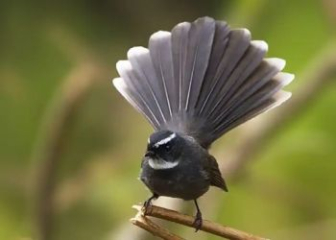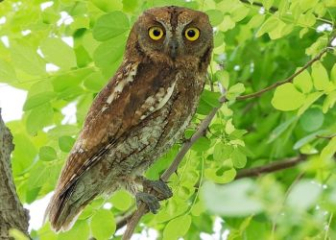Rainbow Lorikeet - How to raise and care from A to Z
Blog | by
Rainbow Lorikeet, a colorful parrot, friendly, intelligent, good at mimicry and loves to eat nectar.
The Rainbow Lorikeet is one of the typical parrots of Australia. With its colorful appearance, active, friendly and intelligent personality, plus many interesting behaviors and habits, it has become one of the most popular pet birds today.
If you want to learn more about how to raise and the characteristics of the appearance and behavior of rainbow parrots, don't miss the content shared by nicebirds in the article below!
Origin of the Rainbow Lorikeet

The rainbow parrot is the most colorful parrot species.
The Rainbow Lorikeet, Trichoglossus moluccanus, is a colorful parrot species in the family Psittaculidae. They are found mainly in Australia and neighboring islands such as Papua New Guinea, Indonesia, and the Moluccas.
Originally, rainbow parrots were only found in the wild in Australia, but over time they were traded as pets and have been introduced to other countries around the world.
In nature, this parrot species mainly lives in tropical rainforests, mangrove forests, coastal forests or orchards, residential areas with lots of trees,...
Currently, the Rainbow Lorikeet is not on the list of endangered species, but in some countries such as Australia and New Zealand, they are even considered an invasive species because of their overgrowth, competition with native species, and destruction of fruit crops.
Classification of the Rainbow Lorikeet (T. m. moluccanus)
Based on scientific research, Rainbow Lorikeets in the wild are divided into two species based on geographical variation and habitat, including the following:
Trichoglossus moluccanus moluccanus
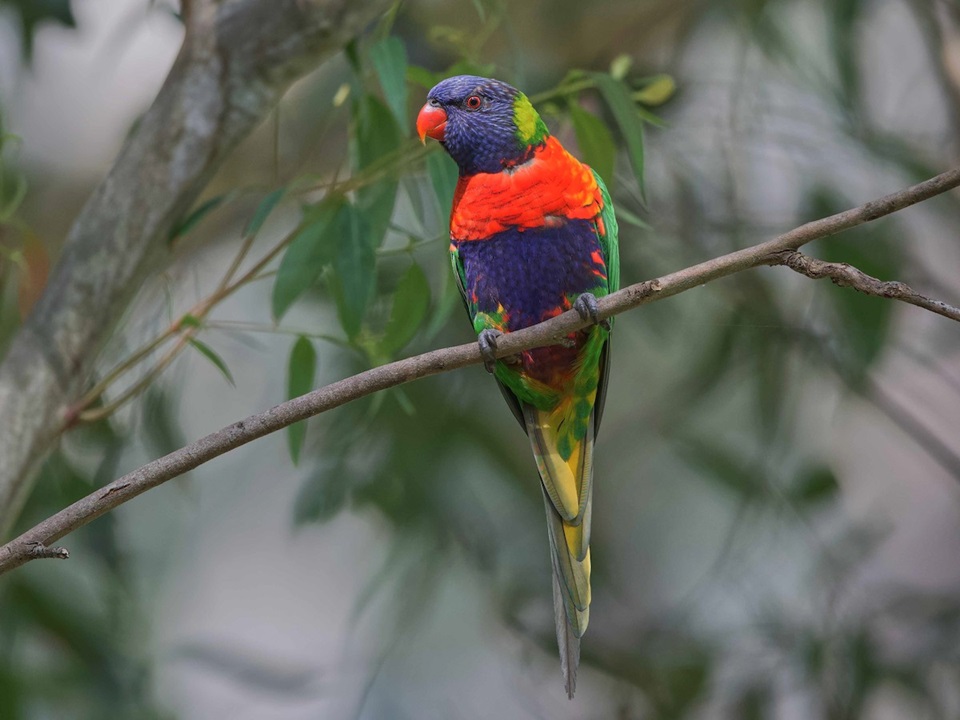
Image of parrot T. m. moluccanus.
This is the most typical subspecies of the Rainbow Lorikeet, found mainly in eastern Australia, ranging from Queensland to South Australia.
They have the following characteristics:
- Color : Colorful with blue head, red chest, bright green back.
- Size : Length from 25 - 30 cm, average weight from 100 - 150g.
- This is the most popular line often kept as pets.
Trichoglossus moluccanus septentrionalis (T. m. septentrionalis)

Picture of T. m. septentrionalis parrot.
Previously, T. m. septentrionalis was considered a separate species, but after a period of research, scientists grouped it with T. m. moluccanus because they have many common genetic characteristics.
They have the following characteristics:
- Distribution : Northern Queensland, Australia
- Color : Quite similar to T. m. septentrionalis but the neck and nape have more golden hues, the red tone on the chest will be lighter.
- Size : Smaller than T. m. septentrionalis
Rainbow Lorikeet Appearance

The Rainbow Lorikeet's colorful appearance.
True to its name, the Rainbow Lorikeet has bright colors and is considered the most prominent and eye-catching among pet birds. Let's learn more about the appearance of this parrot to see if it is really as vivid as a rainbow.
Size and shape:
- Length : 25 - 30 cm
- Weight : 75 - 157 grams
- Appearance : Medium sized parrot, slim, well proportioned body.
- Tongue : Thin, like a brush used to suck nectar and pollen, this is a characteristic of this parrot species.
Colorful body color:
- Head : Deep blue or blue, sometimes with a slight purple tint, looks very glossy and iridescent.
- Chest and abdomen : Bright red or orange-red, with bright yellow or orange streaks on the sides.
- Back and wings : Bright green or dark green.
- Tail : Long, tip, mainly green, with the edge of the tail being light green or yellow.
- Beak : Reddish orange, slightly curved.
- Eyes : Round, small, orange or dark red.
Distinguishing between male and female parrots:
- It is impossible to tell male and female parrots apart by appearance because they look very similar.
- Can only be distinguished by DNA testing.
Rainbow Lorikeet Behavior
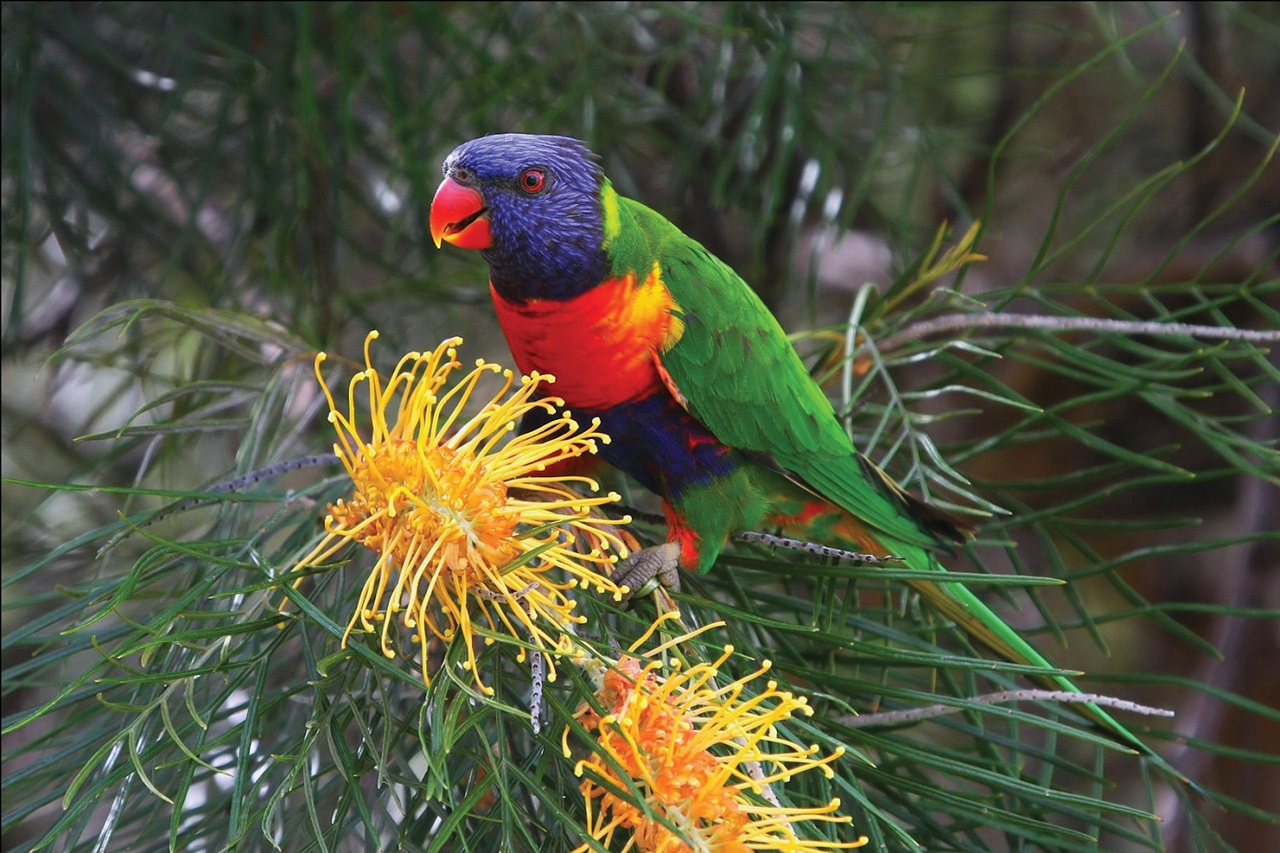
A rainbow parrot is eating pollen.
Below are some of the notable characteristics of the habits and behavior of rainbow parrots. Let's see if they are any more outstanding and different from other parrots in the Psittaculidae family!
Active, friendly with people
Rainbow Lorikeet is an extremely active and lively parrot, you will rarely see them standing still for too long, instead they will be flying, climbing and exploring everything around them.
They also like to interact and get to know people. Especially when raised from a young age, this parrot will be very clingy and often follow its owner everywhere.
Smart, good at imitating
Rainbow parrots are considered quite intelligent, they have the ability to remember simple commands, imitate voices and sounds well and can easily distinguish between familiar and unfamiliar people.
Some individuals even have the ability to unlock and open cage doors very "artfully", so you need to be careful with doors!
Like to live in pairs
Unlike other small to medium sized parrots, rainbow parrots prefer to live in pairs. They have a very close relationship with their mate. They usually gather in large flocks when needed and then separate into pairs again.
Territorial
Rainbow Lorikeets are quite territorial parrots. They are only friendly with humans, but with other rainbow parrots or other birds such as noisy miners or little wattlebirds, they are completely the opposite, they will be very aggressive and chase them away to protect their territory and nest.
Fun eating habits
Rainbow parrots have a unique brush tongue that helps them suck nectar and pollen. This is also the main source of food for this bird in the wild.
The sound is quite loud.
Although only average in size, Rainbow Lorikeets have a fairly loud voice, which can even be very "shrill" if not trained from a young age.
They often make loud noises when they are happy, when calling for a companion, when they want to warn of something unusual or even when they feel bored.
How to raise and care for Rainbow Lorikeet
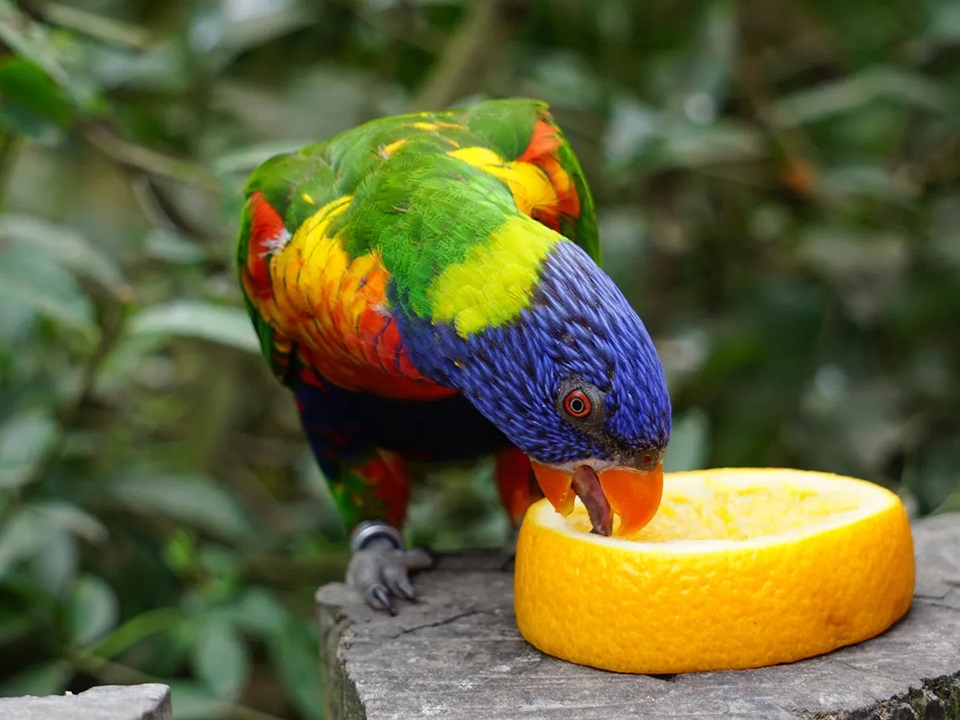
The rainbow parrot is eating an orange.
If you are interested and want to raise this lovely rainbow parrot but don't know where to start, please refer to the detailed instructions on raising and caring for parrots that we share below to be successful from the first time!
Optimal cage and living space design
The most important thing in raising a rainbow parrot is that you need to prepare an optimal cage and living space to help the parrot quickly adapt and develop well in the artificial environment. The following criteria must be met:
- Living space : Needs large, spacious cages or semi-natural raising.
- Cage material : Sturdy and safe because this parrot is quite "active" and has a strong beak, so it is easy to damage the cage.
- Location of cage : Needs to be placed in a cool, shady place, without much noise, dust or direct wind.
- Regular cleaning of the cage : Need to clean the feces tray, food tray, and water tray regularly.
- Decorate the cage : You should arrange perches, chew toys, climbing ladders, etc. so that the parrot can entertain itself.
What do rainbow parrots eat?
As shared above, in the natural environment, Rainbow Lorikeets mainly eat pollen, nectar and fresh fruit, so when keeping them in captivity, you should feed them the following foods:
- Main food : Special food for Lorikeet parrots, artificial nectar.
- Fruits : Papaya, apple, banana, grape,...
- Drinking water : Clean water, no chlorine, needs to be changed daily.
- Foods to avoid : Dry seeds because they are difficult to digest, coffee, butter, chocolate, onions and garlic because they can easily cause poisoning.
Daily communication and training
Rainbow parrots are very active, affectionate and somewhat “naughty” with a loud cry, so you need to spend a lot of time interacting and training them to become happier and more obedient. Please note the following:
- Spend at least 2 hours a day playing and talking with them.
- Basic training should be given such as calling the name, climbing on the hand, on the shoulder, no loud screaming,...
- Do not lock or leave parrots alone for too long because it can easily cause them to become stressed, bite and scream louder.
Health care, regular check-ups
Although rainbow parrots have relatively good resistance, if not properly cared for, they can still suffer from some digestive diseases, infections, respiratory diseases or stress. If you want to protect your parrot's health, please refer to some of the following instructions!
Optimal disease prevention :
- Clean the cage regularly, clean the feces tray, change clean water, clean toys, perches,...
- Have regular health checks as required by your veterinarian, usually every 6 months.
- Observe your parrot every day to quickly detect unusual signs such as lack of movement, diarrhea, sneezing, feather loss, loss of appetite, refusal to eat, etc. and provide timely treatment.
- Add digestive enzymes and vitamins to food.
- Limit sudden changes in environment, do not leave parrots alone for too long,...
How much is a Rainbow Lorikeet?
Below is the price list of rainbow parrots that we have compiled from reputable bird shops. If you want to buy this parrot, you can refer to it right away!
Note : The price list is for reference only because the price of Rainbow Lorikeet parrots will change depending on the time, origin, color and purity of the parrot.
|
Rainbow parrot |
Characteristic |
Reference price (VND/piece) |
|
Baby Rainbow Parrot |
Can't eat yet, have to feed by hand |
1,800,000 - 2,800,000 |
|
Baby rainbow parrots can eat |
About 3 - 5 months old, independent, easy to care for |
2,800,000 - 3,200,000 |
|
Adult Rainbow Parrot |
Tamed, good interaction |
4,000,000 - 6,000,000 |
Suggest :
- You should choose baby parrots that can eat because they are easy to care for and this is also the golden time to train and get acquainted.
- You should only buy from reputable bird shops to ensure the origin and quality of the parrot.
Questions and answers about Rainbow Lorikeet?
Can Rainbow Lorikeets talk?
Yes, rainbow parrots can speak and imitate human speech but not as well as African grey or ringneck parrots.
Should Rainbow Lorikeets be fed seeds?
No, because the seeds are often very hard, can easily damage the "brush" tongue and are not suitable for the digestive system of this parrot species.
How long do rainbow parrots live?
If well cared for, rainbow parrots can live 15 to 20 years, or even longer.
Do rainbow parrots live in flocks?
Rainbow parrots prefer to live in pairs, occasionally gathering in flocks.
The most beautiful and colorful rainbow parrot pictures
If you want to admire more beautiful moments of rainbow parrots to verify whether they are really as "brilliant" as rumored, don't miss the collection of vivid, colorful images shared below!
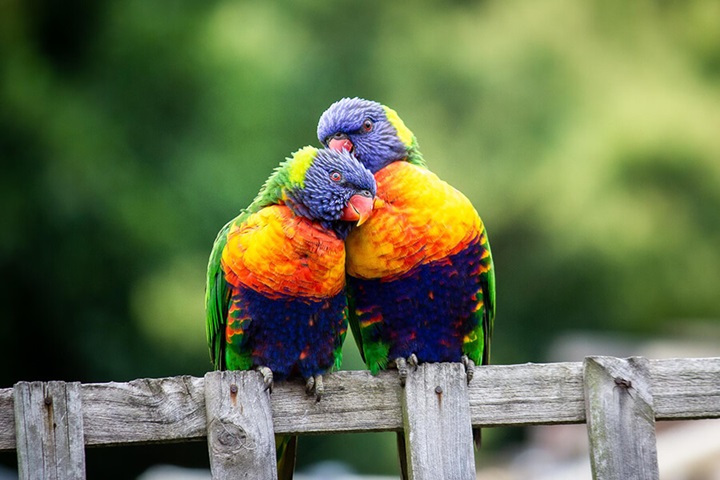
A couple of rainbow parrots are "cuddling" with each other.
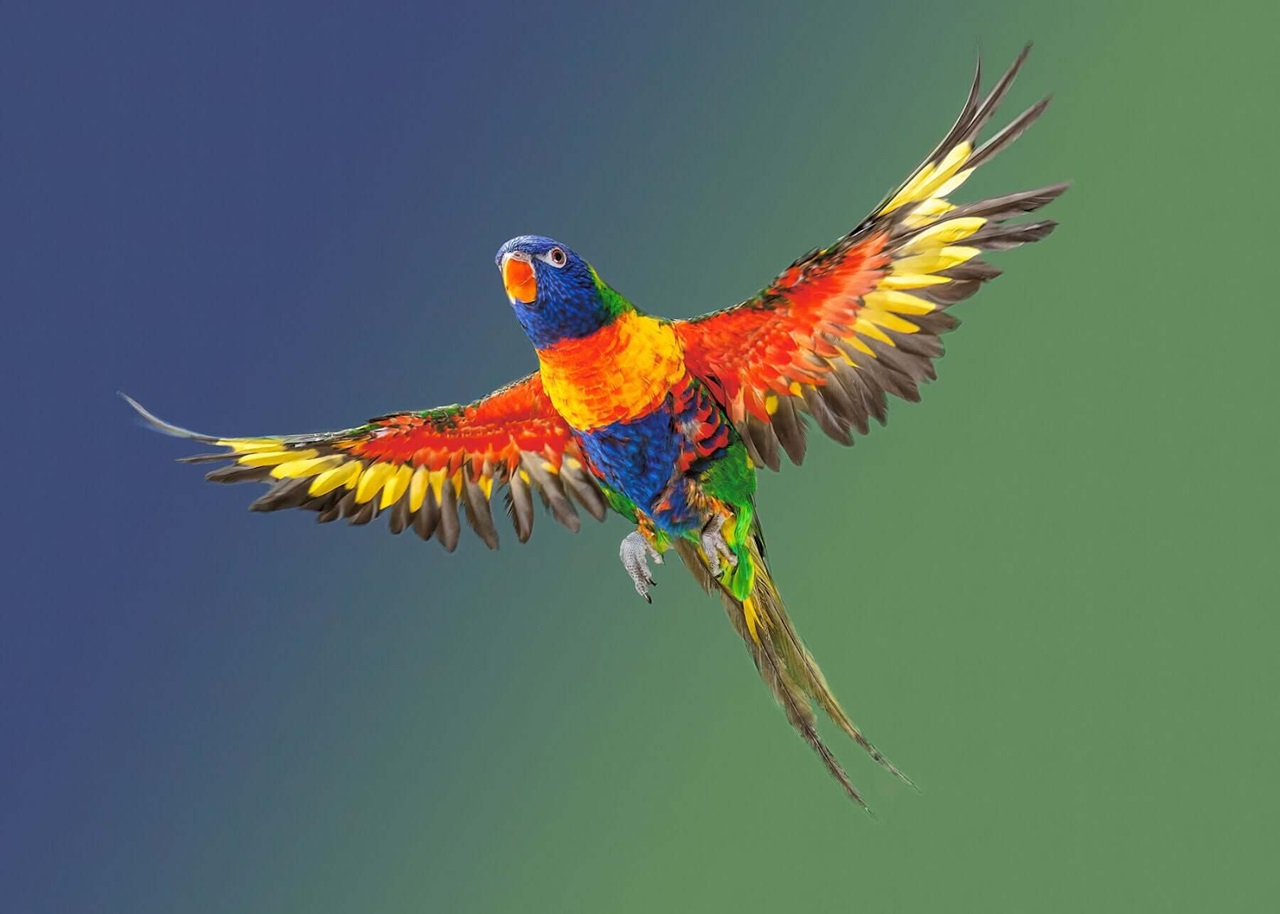
Image of a rainbow parrot spreading its wings.
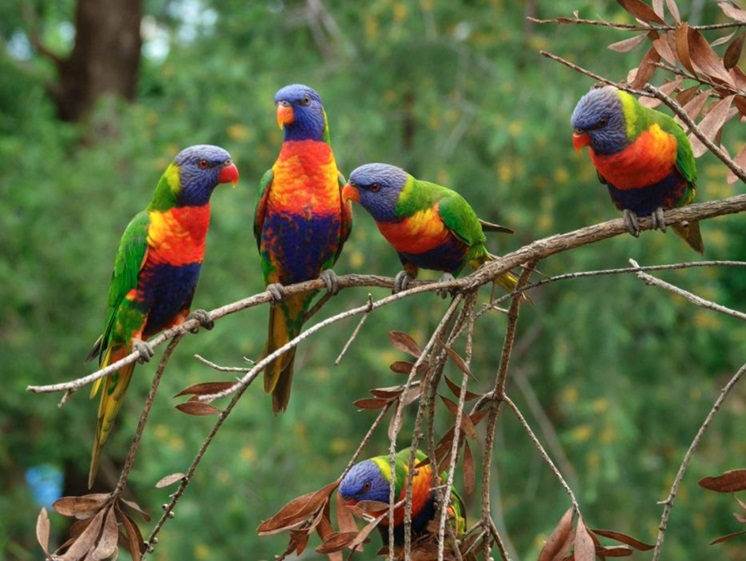
A flock of Rainbow Lorikeets are perched on a tree branch.

A rainbow parrot is eating nectar.
Through the content that nicebirds.net shares in the above article, it can be seen that the Rainbow Lorikeet is not only a colorful, eye-catching parrot, but also very intelligent, friendly and active. Completely suitable for those who want to raise a small, beautiful and active bird.
Don't forget to follow our Blog section to explore the super rich world of ornamental birds!

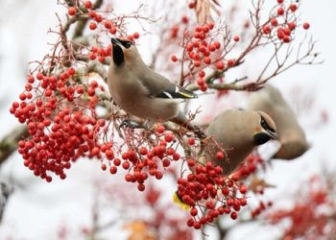

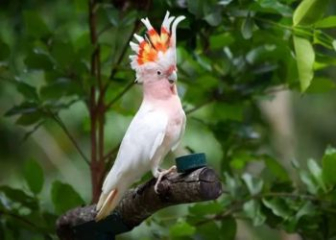
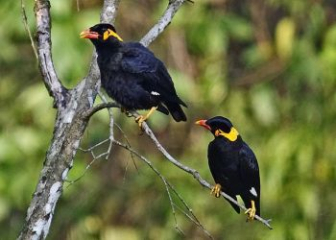
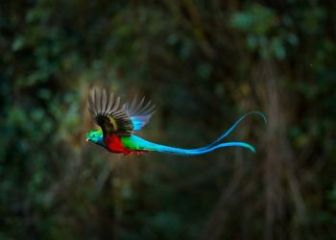





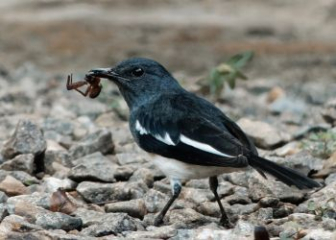
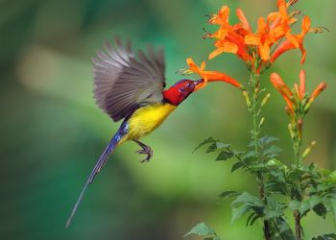


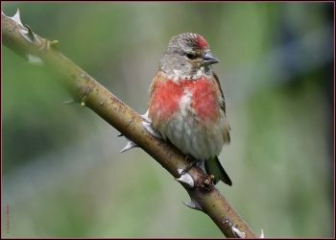
_350x250.jpg)
